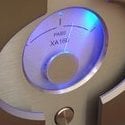Retained
-
Member Title
Sophomore Member
Recent Profile Visitors
-

Discussion of AC mains isolation transformers
zilch0md replied to asdf1000's topic in UpTone Audio (Sponsored)
Hi tims! Unfortunately, I'm not able to go back and edit the post you are quoting: https://audiophilestyle.com/forums/topic/29662-discussion-of-ac-mains-isolation-transformers-started-wposts-moved-from-quotlps-1-troubleshootingquot-thread/?page=31&tab=comments#comment-704749 Quite some time ago, I updated the graphic to correct an error in my understanding, thanks to the teachings of John Swenson. The punchline is that Common-Mode noise is attenuated by Isolation Transformers, whether their secondaries have floating neutrals or grounded neutrals. Here's my current version of that graphic: ... as found on the first page of this thread at Head-Fi.org: https://www.head-fi.org/threads/topaz-low-capacitance-isolation-transformers-for-affordably-clean-power.857448/ In answer to your questions, I personally wouldn't bother to convert to balanced operation, even if it's possible and yes, for safety reason, you should not plug more than one load into a transformer with a floating neutral secondary. I don't believe any Topaz units shipped with a floating secondary, so yours must have been modified. I recommend you ground the neutral, but if you don't know how, you should get an certified electrician to do the work for you. It's either that or just get another one and keep this one for powering a single DAC or any single audio component that uses a switch-mode power supply - both of which are suspect for backwashing noise onto the mains - where a floating neutral secondary can prevent that from happening. -
The ratio of buyers to sellers is lower than it was just three or four years ago - in both the new and used markets. We have a supply glut, especially for "luxury" items. People need food and shelter, but they can live without audio hardware - at least they think they can. :-)
-

Discussion of AC mains isolation transformers
zilch0md replied to asdf1000's topic in UpTone Audio (Sponsored)
I'm good with that, but the Swenson is my shepherd, I shall not taunt. He maketh me to break down the leakage currents: he leadeth me beside low noise levels. He restoreth my soul, my R&B, and every other genre. I'd better stop there, before my system gets struck by lightning. -

Discussion of AC mains isolation transformers
zilch0md replied to asdf1000's topic in UpTone Audio (Sponsored)
Oh wow! I feel so relieved to hear that! I felt bad, sharing that information with the thought that it had already been shipped. Thank YOU for letting me know. :-) -

Discussion of AC mains isolation transformers
zilch0md replied to asdf1000's topic in UpTone Audio (Sponsored)
YMMV, but my 120V, 500VA Topaz 19095-32 increases the voltage about 3% at the Secondary, relative to the input at the Primary, when driving my headphone system, which is putting a very light load on the 500VA Topaz. I've heard of isolation transformers that maintain a true 1:1 ratio, whether unloaded or fully loaded, but I can't imagine how that's possible without including some kind of voltage regulator circuit at the secondary (which would create some noise of its own), in combination with windings that provide the minimum input voltage required by the regulator. In my admittedly limited experience, and paying attention to what others have said, most so-called 1:1 isolation transformer will give you a higher voltage at the output, especially when not loaded to its rated capacity - which, in your case, would be desirable, given that you're not getting a full 240V from the mains. I have the opposite problem: I'm using a voltage regulator at the mains to reduce ~127V down to 110V, before my transformers increase the voltage back to where I want it (~120V). I don't want to be the bearer of discouraging news, but the Topaz 91001-11 that you've ordered does not have the low 0.0005 pF inter-winding capacitance of Topaz/SquareD/MGE/Daitron models ending in -31 or -32, as shown in this PDF: http://www.pacificparts.com/vends/mge/images/t1.pdf The 91001-11 is rated at 0.005 pF as shown in this photo: See: https://www.head-fi.org/threads/topaz-low-capacitance-isolation-transformers-for-affordably-clean-power.857448/ -

Discussion of AC mains isolation transformers
zilch0md replied to asdf1000's topic in UpTone Audio (Sponsored)
Thanks Speedskater, I was paraphrasing what JS had written, here: -

Discussion of AC mains isolation transformers
zilch0md replied to asdf1000's topic in UpTone Audio (Sponsored)
Thank you Cornan, but that particular JS post you've quoted, makes no mention of star-quad RCA interconnects, but he does offer a great explanation of the reduced inductance enjoyed when using star-quad DC cables - as I had mentioned, quoting him, actually, in my post this morning, lamenting that I can not hear any audible improvements when using the Ghent Audio star-quad DC power cable to supply 7.0V to a USB Regen. So, as I had said before, I'm disappointed that the star-quad DC cable's ability to reduce inductance yielded no audible improvements in my particular application, but I've not, at any time said, a star-quad cable cannot make audible improvements by reducing inductance. What I have said, only parrots the following JS post, where he recently explained that star-quad DC power cables do not offer the same advantage of immunity to EMI, that can be enjoyed with star-quad microphone and line-level interconnects (i.e. RCA interconnects) - where the voltages are much lower and, thus, more susceptible to EMI, with the only downside being, as I recently stated (again parroting JS), the possibility of increased capacitance, in longer cable lengths.) Mike -

Discussion of AC mains isolation transformers
zilch0md replied to asdf1000's topic in UpTone Audio (Sponsored)
Since receiving it three days ago, the reduced inductance of my Ghent Audio star-quad DC power cable has been lowering the voltage drop that would otherwise be suffered in supplying 7.0V DC to my USB Regen from my el cheapo LPS - making no audible improvements whatsoever as it is incapable of offering any significant reduction in EMI thanks to the voltage being so high (relative to voltages seen in microphone cables and line level interconnects, where star-quad cables can make a huge difference.) So now, with the exceedingly well-made Ghent Audio DC cable making no audible improvements, I'm going to select and order some star-quad RCA interconnects, where the line level voltages are more susceptible to EMI - and as long as the interconnects are short, as mine will be, the star-quad disadvantage of increased capacitance shouldn't be a problem. -

Discussion of AC mains isolation transformers
zilch0md replied to asdf1000's topic in UpTone Audio (Sponsored)
My 500VA Topaz 19095-32 is also pretty close to silent. I have to put my ear close to it to hear anything. It is not a toroidal transformer, though. Then again, there are some people out there with noisy Topaz transformers (i.e. John S.) I really think the quality of the incoming AC mains power is a big factor, no matter what type of transformer you are using - and that incoming quality can fluctuate throughout the day. There are are a lot of people out there who have silenced noisy transformers that are inside their various audio components, just by inserting a DC blocker ahead of the their A/V systems - here in the States, too, not just elsewhere. See the reviews of the relatively affordable Emotiva CMX-2, which is more than just a DC blocker. It's the people who had noisy transformers who are writing the most positive reviews of the CMX-2 - so, I'm pretty sure it does a good job of DC blocking, even if it only does a fair job of CM or DM noise reduction. If I had a noisy transformer, even a noisy Topaz, I would try putting the CMX-2 in front of it. I definitely would not put anything like this (containing MOVs for surge protection) in between my Topaz and the power strip into which all my gear is plugged. Surge protectors, if really needed, should be placed ahead of the Topaz - which is exactly where you want a DC blocker, too. -

Discussion of AC mains isolation transformers
zilch0md replied to asdf1000's topic in UpTone Audio (Sponsored)
Thanks Cornan. Reading John's posts again (quoted above), I have no contention with his statement that the star-quad configuration does a great job of reducing vulnerability to externally applied EMI. None of the article I quoted say otherwise. What's being debated here is the degree of concern one must have for blocking external sources of EMI (by using star-quad cables) for applications other than microphone cables and line level cables - where weak signals are far more vulnerable to external EMI than stronger signals, especially in long cable runs, as with microphone cables on a stage. Both Canare and Blue Jeans discount the value of using star-quad cables for higher voltage (higher current?) applications, except when the goal is to limit magnetic emissions outward from the cables themselves (all of which is consistent with the quoted Wikipedia article.) In the end, it's possible that Canare and Blue Jeans Cable and the contributors to that Wikipedia article are simply underestimating the noise-reduction benefits of using star-quad cables in applications other microphone and line-level cables and, as I mentioned previously, it probably can't hurt to use star-quad cables everywhere, even though the benefits are allegedly less valuable or, at least, less cause for concern, with some applications. -

Discussion of AC mains isolation transformers
zilch0md replied to asdf1000's topic in UpTone Audio (Sponsored)
I realize this thread isn't the right place for discussion of cables, but I feel compelled to correct some misinformation that has been posted here. l am still waiting for the Ghent star-quad power cable to arrive, but I've been studying the subject of star-quad cables and have concluded that they are ONLY useful for incoming noise immunity when the signal voltage is quite low - as with microphone cables or line-level signals (i.e. RCA interconnects). When the voltage on the line is higher, as with speaker cables and power cables, the advantage is actually reversed - star-quad cables will inhibit emission of magnetic fields from the cable! Quoting this Canare Star-Quad document: "Canare Star Quad is designed for use with microphones but is also excellent for all line-level signals (e.g. mixer to power amps)." AND "The signal generated by a microphone during quiet periods can be very low in level, -70dB to -120dB (0.3 millivolts to 1 microvolt). The cable that must carry this signal to the mixer is very sensitive to Electromagnetic Interference (EMI), Radio Frequency Interference (RFI) and electrostatic coupling of hum and noise." Note the conspicuous absence of any recommendation for using their star-quad cables for purposes other than microphone or line-level signals. Quoting Blue Jeans Cables: "Speaker cable is a bit different from a lot of the interconnect cables we handle, in several respects. Because speakers are driven at low impedance (typically 4 or 8 ohms) and high current, speaker cables are, for all practical purposes, immune from interference from EMI or RFI, so shielding isn't required." AND "Canare 4S11 is a "star quad" 14-gauge cable, with four conductors together in one outer jacket; it is popular for bi-wiring (where separate wires run to each of four speaker terminals, two of which drive the high and two of which drive the low-frequency elements of the speaker assembly). When conventionally wired [with two conductors shorted together for each channel], star quad speaker cable has the advantage of reducing the EM field around the cable, which will tend to diminish the effect of the signal in the speaker cable upon nearby interconnects--though this is not, in most applications, a significant concern." They're saying that you can reduce the outward emission of electromagnetic fields from a speaker cable by using star-quad cable, but that there's little concern for doing this. Again, note the absence of any claim for improving immunity from inbound noise when star-quad is used as a speaker cable (not as a microphone or line-level cable). Quoting a Wikipedia article: "The combined benefits of twisting, differential signalling, and quadrupole pattern give outstanding noise immunity, especially advantageous for low signal level applications such as long microphone cables, even when installed very close to a power cable." AND "While the above discussion focuses on preventing noise from getting in (e.g. into a microphone cable) the same star-quad quadrupole configuration is useful for audio speaker cable,[10] for split-phase electric power wiring, and even for open-wire star quad transmission line. In these cases, the purpose of the star quad configuration is reversed. The star-quad geometry cancels the magnetic fields that are produced by the two pairs of conductors. This cancellation reduces the magnetic emissions of the cable." I therefore seriously doubt there is any advantage to be had by using star-quad cable for anything other than weak, low-voltage signals. It's especially useful with weak signals running in close proximity to devices that are emitting electromagnetic interference, as seen in the YouTube video where energized transformers are placed directly on top of microphone cables. With higher-energy signals, it would be a rare situation in which there's anything to be gained by reducing the outward emission of magnetic fields from the cable. Then again: Why not use star-quad everywhere? We get inbound noise reduction with low-level signals (very advantageous) and outbound noise reduction with high-level signals (not so advantageous). There's only one disadvantage that I've read about - in the Wikipedia article: Roll-off of high frequencies, but this only happens with really long cable runs. -

Discussion of AC mains isolation transformers
zilch0md replied to asdf1000's topic in UpTone Audio (Sponsored)
That's a very interesting contraption. I know just enough to say that all those X-Caps would indeed reduce normal-mode noise, but it seems like overkill, when a Topaz can provide -65dB of normal-mode attenuation all by itself (in addition to -146dB of common-mode attenuation.) Also: Common-mode noise sources tend to be more constant, where normal-mode sources tend to be intermittent or even infrequent. See the last page of this pdf: http://www.murata.com/~/media/webrenewal/products/emc/emifil/knowhow/26to30.ashx And: http://www.controlledpwr.com/whitepapers/electrical_noise_attenuation.pdf -
Hey Robin, https://uptoneaudio.com/products/uspcb-a-b-adapter I'm with you - the new hard adapter has actually improved the USB Regen. I had long ago settled on a very short but inexpensive USB cable that sounded better than anything else I had tried between between the USB Regen and the DAC, including the original hard adapter, but without spending any money on exotic solutions, such as the Curious Regen Link. So, I can't speak for how the new hard adapter compares with those $100 to $500 pigtails, but man, I am thrilled with the improvement had over every "cheap" connection I have tried. And $38, including shipping, is wonderfully affordable - definitely up there as one of the best bang-for-the-buck purchases I've made in audio. More specifically, the only rig for which the DAC employs a USB source, is my near-field monitor setup (a departure from my primary obsession with headphone rigs.) As a headphone enthusiast, I'm not reluctant to admit that no headphone can give you the soundstage and imaging offered by speakers, and I'll go further to say that I don't have the time or the money to build a room that's properly tweaked for loudspeakers, so near-field monitors allow me a lot more control of placement relative to my head, with less concern for room reflections, given that both I and the monitors are out in the middle of the room, nowhere near any walls. Getting to the point, I wish I had something like the KEF LS-50s, with coaxial drivers, but being the bottom-feeder that I am, I went with a pair of the less-expensive, two-way, Definitive Technology SM45, driven by a TBI MG3 Millenia solid state, Class BD amp (battery powered with a 5500 mAh, 25.2V, 6-cell LiPo pack). To take some of the edge off the Class BD treble, which, to be fair, does not sound much at all like most Class D amps, I feed it with a Metrum Acoustics Octave MkII NOS DAC, using its Anamero-based USB upgrade, that was designed with heavy input from Cees Ruijtenberg. The USB Regen (powered by a Teradak LPS, set for 7.0V output, itself powered by a floating-secondary B&K 1604A isolation transformer, that is plugged into a Topaz 19095-32, grounded-secondary isolation transformer) had managed to add detail and clarity, despite the somewhat "soft" NOS sound (compared to ESS DACs), but this little $38 hard adapter has exploded the soundstage and imaging of my near field monitors. Without question, the most readily discernible improvement is that the SM45 monitors have disappeared - despite sitting at about arm's length from my head, with each of them toed-in to aim directly at each ear, respectively, in both azimuth and inclination. Varying greatly with the track that's playing, of course, I had previously enjoyed some measure of what speakers can do which headphones cannot, but now, especially with the best recordings, I'm hearing nuances of spatial imaging that just weren't there before. I'm also noticing that I'm much more satisfied with lower SPLs, because I'm not trying to dig out the details by pushing the volume to higher levels. I'm kicking myself for not exploring a better USB connection between the Regen and the DAC, earlier, as the USB Regen seems to have been hog-tied by my thriftiness, all this time. Now, of course, I'm wondering if I'd gain anything by going to the ISO Regen's galvanic isolation, but I'll sit on this for a year or so, before moving on. The journey is half the fun. Why rush it? :-) Mike
-

Discussion of AC mains isolation transformers
zilch0md replied to asdf1000's topic in UpTone Audio (Sponsored)
Unloaded, you've measured a difference of 37.5 C - 22.7 C = 14.8 C, relative to ambient. Quoting my earlier post: "That's a difference of 17.8 C (32.0 F) between ambient temperature, at floor level, and the top of the transformer core." So, my transformer runs a little hotter than yours, apparently. -

Discussion of AC mains isolation transformers
zilch0md replied to asdf1000's topic in UpTone Audio (Sponsored)
I feel for you. At the risk of discouraging you, but in the interest of sharing that you are not alone... My Topaz 19095-32 was purchased from an ebay seller who described it as "used, fully functional," when that could not be any further from the truth. Consider this list of FIVE undisclosed problems that I had to fix myself - any one of which disqualified the Topaz from being described as "fully functional" - listed in the sequence of discovery after unpacking it: The 3-prong plug was missing from the supply cable. The hard-to-find fuse was missing from the fuse holder. The difficult to research (obsolete, now redesigned) cap was missing from the fuse holder. The fuse holder had the remains of a fuse jammed into the bottom of it, preventing insertion of a new fuse, even though the overall length of the original fuse holder was the same as the new fuse holder I'd purchased to obtain only the cap. The same fuse fit the new fuse holder perfectly, so I had to de-solder and replace the defective fuse holder in addition to replacing the missing cap. One of the two outlets in the original receptacle refused to accept the full length of any three-prong plug I attempted to insert, because something was actually broken off, at the bottom of the Neutral slot! (Much like the fuse holder had something jammed into the bottom of it.) And replacement of the outlet required de-riveting (drilling out the rivets) two, threaded spring clips, for mounting the new outlet to the cover plate with the original machine screws. How could so simple a device be so messed up, yet described as "fully functional," with no disclosure of any of these five show-stopper issues? I managed to negotiate a 50% refund from the seller AFTER I had determined that I had restored it to "fully functioning" condition and tested it. I never told him I had already fixed everything. I accepted the 50% refund on the understanding that I would keep it, "as is." This was not a case of negligence or incompetence, but in the end, I feel really good about having rescued a beautiful piece of no-longer-made equipment from the trash can. It's very happy in its new home. :-) Mike











